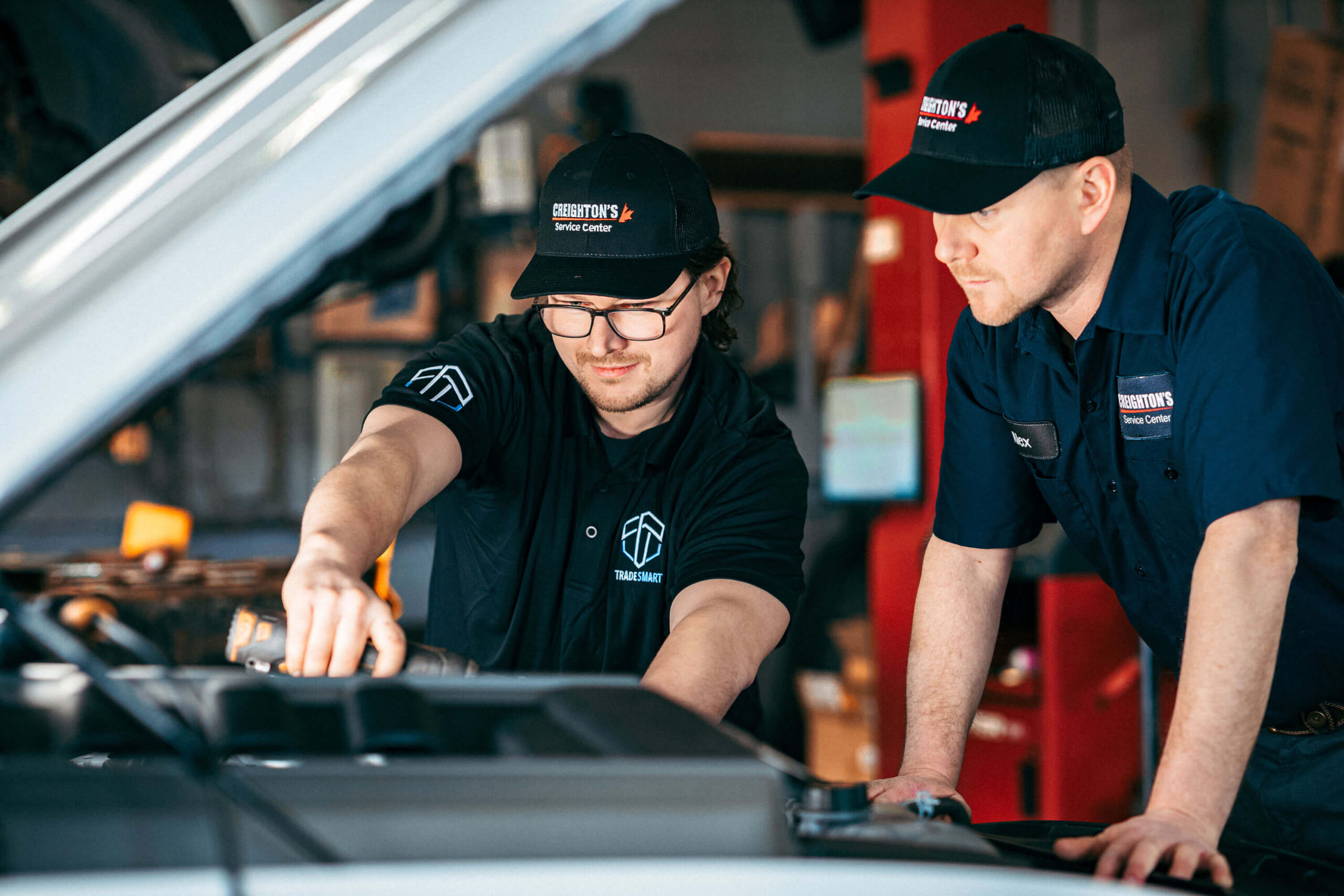
We Need More People in the Skilled Trades
We Need More People in the Skilled Trades For decades, we’ve been hearing about the shortage of people entering the skilled trades, and it seems like the problem is getting worse, not better.

Becoming a skilled trades apprentice opens up a massive range of career possibilities. More people are being attracted to these opportunities, in part because HGTV and the various renovation and real-estate shows play up the glamorous parts of trades jobs. While this is all good for generating interest, it is not sufficient for actually getting people started on the pathway to these careers.
Almost 100 years ago, Elmer Wheeler advised salespeople to, “sell the sizzle, not the steak”. In other words, sell the excitement, the experience, or the dream that the product or service makes possible, not the thing itself. By doing so, he transformed sales and marketing processes, and it has long been the standard practice across most industries. It is so prevalent in fact that even governments, colleges and universities use it.
Governments and colleges sell the sizzle of the trades and other programs by promoting the excitement and opportunities available. To sell the trades, especially to women, youth, and new Canadians, governments fund trades days and “try the trades” programs in schools and community centres. To help encourage girls and women to go into science and engineering, colleges and universities run science camps and “lab days” for girls. And when it comes time to recruit students, colleges and universities show students the fancy labs and equipment rather than the custodian’s closet, health and safety binder, and researcher’s notebooks that keep the whole operation running.
There are obvious benefits to selling the sizzle, in the trades, in science, or indeed in any profession. We have to play up the possibilities to sell any career. So we turn on the sirens and let people slide down the firepole to get people to join the fire service and we showcase brand-name tools and sportscars to get people into the trades. It’s hard to attract firefighters by telling people that most of their day will be spent cleaning, organizing equipment, and waiting. Very few girls, or boys for that matter, will want to go into the trades if we tell them that 80% of trades work is staging – organizing, recording, maintaining, and transporting goods and tools, plus cleanup and disposal.
Having said that, there is a danger of selling past the close, to use another sales mantra. In this case, If we only expose people to the glamorous parts of a trade once they have decided to pursue it, we run the risk of creating unrealistic expectations. For instance, many students graduate from pre-apprenticeship programs thinking that they are fully qualified to do the exciting tasks of their trade and are unwilling to tackle the menial work. Plumbing neophytes want to install the multi-head shower, or would-be carpenters want to build the mahogany mantle, and they get frustrated when they’re told to sweep the shop instead. But sweeping the shop, sorting bolts, cutting boxes and moving pipe are all essential tasks in the trades. None of this is “just labour” or “not real trades work”. It is the steak that makes the sizzle possible.
There is another dimension to the reality of trades work, and it is something that doesn’t get covered in most programs and “try the trades” days. Trades work is fundamentally about team work. Every trades project gets done by a team, even if that team is only the tradesperson and the customer. This means that the needs of the team are paramount, and this plays out in several ways. The most basic requirement of being on a team is showing up on time and being ready to contribute more than your fair share. These are the go-to people on any team regardless of their skill, and they are the ones who consistently get picked for the next project.
Being a good team member is pretty similar to being a good citizen, or being a good professional. The skills are the same, and are based on taking personal responsibility, acting with integrity, and being willing to cheerfully put in the work required to get the job done. All of this is necessary before the glamour can happen. In any trade, be a professional and you will have jobs and opportunities. Be self-absorbed and you won’t.
As I explain in another blog, taking on an apprentice is a costly endeavour for any company. The natural assumption then is that companies are looking for people to have some fairly well-developed technical skills in a trade before taking them as an apprentice. Lots of pre-apprenticeship programs are based on this idea, where the emphasis is on the amount of time a student spends in a workshop doing the “hands-on” work of the trade. This dovetails nicely with selling the sizzle, because students get to use some of the latest tools in clean, climate-controlled workspaces.
The problem is that companies do not choose apprentices based on their pre-existing technical skills or how well they use tools in an artificial environment. Instead they hire, and fire, on professionalism. Pre-existing technical wizardry is an afterthought at best. Being a professional is rarely glamorous, but it is the steak that makes the sizzle possible. And it is the only thing our Trade Smart certified companies look for when they decide to bring someone on as an apprentice.
There are tons of great opportunities in the trades in Ontario, and across the country. And there is some glamour and glory in most of these possibilities. But that comes later, after one has become a consummate professional and can be trusted to approach every task with integrity. As in most other careers, the hard work comes first.

We Need More People in the Skilled Trades For decades, we’ve been hearing about the shortage of people entering the skilled trades, and it seems like the problem is getting worse, not better.

Your Chances of Getting an Apprenticeship: By the Numbers By any measure, Ontario is desperately short of skilled tradespeople. We need people now, but the first step in becoming a tradesperson is to

What’s the Highest Paying Trade in Ontario in 2024? Many of our prospective students ask some version of the question, “what is the highest paying trade in Ontario?” We understand the impulse behind
